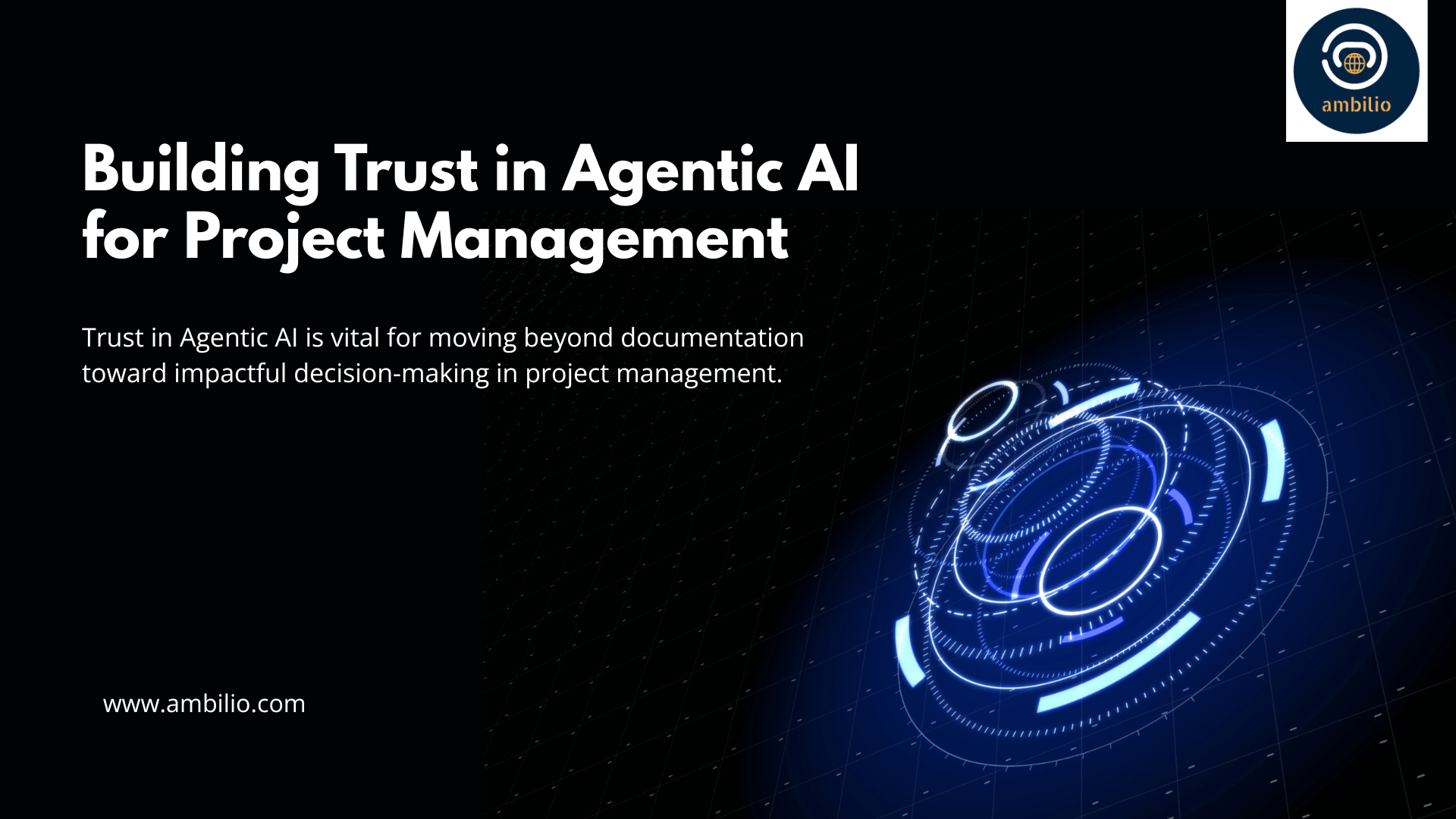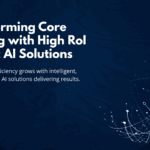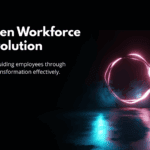In recent years, project management has been flooded with new digital tools, yet one of the most disruptive innovations—agentic AI—remains largely underused. Enterprises are experimenting with AI agents, but adoption is mostly confined to low-risk activities like documentation, meeting notes, and knowledge sharing. The real potential of agentic AI—autonomous decision-making in planning, resource allocation, and risk management—remains untapped because of deep concerns around trust, accountability, and data security. This article explores why enterprises hesitate to scale agentic AI beyond the surface level, what barriers hold back adoption, and most importantly, how organizations can build confidence to fully leverage this transformative capability.
The Current State of Agentic AI in Project Management
Agentic AI refers to systems that act with autonomy, making context-aware decisions rather than just offering recommendations. In project management, this means more than summarizing a meeting—it involves scheduling resources, balancing workloads, predicting risks, and even negotiating dependencies between teams.
Today, however, most organizations restrict agents to clerical or supportive roles. AI is used to draft reports, update knowledge repositories, or transcribe standups. While these are useful, they do not address the most pressing challenges of project management: handling delays, aligning distributed teams, and managing risks in real time. The gap between potential and practice highlights a core issue—enterprises do not yet trust AI agents to operate where the stakes are high.
Why Enterprises Don’t Trust Agentic AI Yet
Accountability and Control
Project managers are accountable for outcomes. When an AI agent autonomously reallocates resources or reschedules tasks, responsibility becomes blurry. Leaders worry about liability if something goes wrong. As a result, AI agents are often kept in “advisor” mode rather than being allowed to take decisive action.
Reliability and Accuracy
AI systems are not infallible. A flawed forecast or mistaken reassignment could ripple across a multi-million-dollar project. While mistakes in documentation are easy to fix, errors in planning or budgeting can cause real financial and reputational damage. Until accuracy improves and systems provide clear explanations for their actions, enterprises hesitate to hand over control.
Data Sensitivity and Security
Project data is sensitive by nature—it includes client contracts, financial information, and intellectual property. Allowing AI agents to access and act on this data raises concerns about confidentiality and compliance. Without strong data governance, companies avoid deeper integrations.
Integration Challenges
To make meaningful decisions, AI agents must integrate with project management platforms, HR systems, finance tools, and collaboration software. Such deep integrations are technically complex and organizationally sensitive. Many firms fear workflow disruptions or compliance breaches if an AI agent missteps.
Cultural Barriers
Adopting agentic AI is not just a technical shift—it requires cultural readiness. Teams accustomed to manual oversight struggle to accept AI recommendations, let alone automated actions. Leaders need to build confidence step by step before AI agents can be trusted partners.
The Untapped Potential of Agentic AI
If trust and adoption challenges are overcome, agentic AI could transform project management in several ways:
- Dynamic Resource Allocation – AI could continuously monitor workloads and reassign tasks to optimize efficiency and reduce burnout.
- Predictive Risk Management – Agents could run real-time simulations to forecast delays or budget overruns, offering early interventions.
- Scenario Planning – By analyzing past projects, agents could model “what if” scenarios to help managers choose the most effective strategy.
- Automated Stakeholder Communication – Personalized updates could be generated for executives, clients, and team members, saving countless hours of reporting.
- Continuous Learning – Every project could serve as training data, with agents capturing lessons and applying them to improve future outcomes.
The opportunity is enormous: instead of being assistants, AI agents could become active partners in shaping project direction and outcomes.
A Roadmap for Building Trust in Agentic AI
To move from limited adoption to widespread use, enterprises need a phased approach. Trust cannot be demanded; it has to be earned through structured deployment.
Phase 1: Low-Risk Automation
Start with non-critical activities like documentation, knowledge search, and meeting summaries. This builds familiarity with AI agents and allows teams to see tangible value with minimal risk.
Phase 2: Decision Support
Introduce AI agents into planning discussions, risk dashboards, and workload analysis—but keep final decisions with human managers. At this stage, AI provides recommendations backed by evidence, helping managers validate their judgment.
Phase 3: Semi-Autonomous Actions
Allow AI agents to take limited actions within pre-defined boundaries, such as reassigning small tasks or sending reminders. Human oversight remains but with reduced intervention, helping teams see that the system can be trusted.
Phase 4: Full Autonomy with Guardrails
Once confidence is established, agents can handle larger responsibilities such as resource reallocation, real-time risk adjustments, or budget recommendations. Strong audit trails, explainability features, and compliance checks are critical at this stage to ensure accountability.
How Enterprises Can Leverage the Potential
Invest in Explainability
AI decisions should never appear like a “black box.” Enterprises must adopt systems that show why a decision was made—what data was used, what risks were weighed, and what alternatives were considered.
Strengthen Data Governance
Robust security protocols, role-based access, and compliance monitoring are essential. By ensuring data is handled responsibly, organizations reduce resistance to AI adoption.
Foster Cultural Readiness
Change management programs, training sessions, and transparent communication are necessary to build trust among project teams. Leaders must position AI as a partner, not a replacement.
Pilot and Scale Gradually
Rather than deploying AI agents across the entire organization at once, start with pilot projects. Measure results, document lessons, and then expand adoption in a structured way.
Final Words
Agentic AI has the potential to change the way projects are planned, executed, and delivered. Yet today, most enterprises are stuck at using it for documentation and knowledge sharing—safe but shallow applications. The hesitation is not about lack of technology; it is about lack of trust. Enterprises worry about accountability, accuracy, and data security, all of which are valid concerns.
The path forward is not to avoid agentic AI but to adopt it responsibly. By starting small, focusing on explainability, and building cultural readiness, organizations can unlock new levels of productivity and precision in project management. When trust is established, AI agents will move from being note-takers to being decision-makers—transforming project management into a truly adaptive and intelligent discipline.



